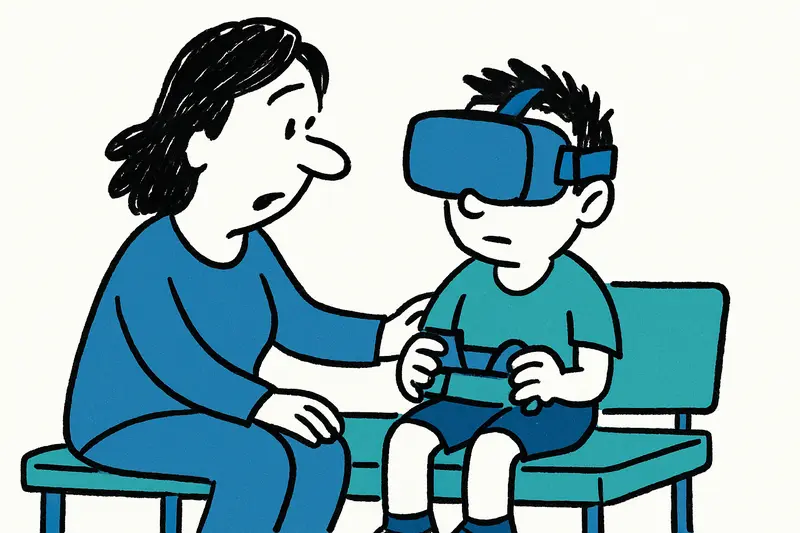At Son Llàtzer Hospital, virtual reality headsets help children during blood draws and examinations: less fear, more cooperation — and sometimes even the parents are amazed.
When a game works better than a drop of anesthesia
Late in the morning in the corridor of the pediatric emergency department at Son Llàtzer, a mother sits with her seven-year-old son on one of the turquoise benches. The air smells of disinfectant and freshly brewed coffee from the cafeteria next door. Instead of trembling, the boy stares intently at a calming seascape — through a virtual-reality headset that a nurse had put on him just moments before.
What exactly happens?
The headsets show short interactive scenes: simple games, colorful meadows, or quiet beach pictures. While a blood draw or the setting of an infusion is imminent, the virtual world distracts. The medical team observes: Many children relax visibly, breathe more slowly, cry less. Some afterwards say they hardly felt the prick.
A look behind the scenes: The project has been running for a few weeks, funded by a program of the public health system. Nurses received brief training on how to use the devices hygienically and present them in a child-friendly way. In Corridor 3 there are now always two charging cables and a small box with spare cushions — small things that matter in everyday life.
More than just distraction
It's not just about fun. Doctors report that examinations proceed more smoothly because children cooperate better. Less stress also means less need for medications or stronger sedatives. A pediatric nurse laughs: “We already call them the magical windows here.”
Parents are often surprised. One mother said her child remained briefly in the virtual sea bay after the treatment — very calm, almost peaceful. Such moments help the team work quickly and gently without placing extra burden on the child.
Hygiene, safety and boundaries
Of course there are rules: no headset for contagious illnesses, thorough cleaning between uses, and careful selection of content — nothing exciting or overstimulating. Some children are not interested or react fearfully to the technology; then the classic conversation and the familiar hand of the nurse remain the best help.
Looking ahead
The hospital is now considering whether to expand the offering — perhaps also for pain therapies in chronically ill children or in the dental clinic. For the moment, however, the small digital timeout in an emergency often makes the difference: fewer tears, faster procedures, and calmer parents in the end.
Anyone who visits Son Llàtzer more often notices it: in the waiting area there is now more often a quiet laughter in the air. And that, as simple as it sounds, is a small relief for everyone.
Similar News

Balearic Islands Expand Psychological Care in Health Centers
From mid-October, direct psychological help will be available in many Balearic health centers for the first time. Ten st...

Hair Matter: Why Many Choose Turkey for a Hair Transplant
More and more people are booking clinic packages in Istanbul: modern planning, fairer prices and often extensive service...

Flu vaccination campaign for preschoolers on the Balearic Islands begins
From today, around 28,000 preschoolers at more than 350 schools on the Balearic Islands can be vaccinated against flu. M...

Mallorca Flu Vaccination Campaign 2025/26: Schools First, Then Risk Groups
Starting October 6, vaccinations for preschool children at schools will begin. Starting October 13, all at-risk groups w...

Virtual Reality Glasses to Ease Chemotherapy for Cancer Patients in Inca
In the hospital in Inca, doctors and nurses are testing VR glasses that show short relaxation videos. Early users report...
More to explore
Discover more interesting content

Experience Mallorca's Best Beaches and Coves with SUP and Snorkeling

Spanish Cooking Workshop in Mallorca

Valldemossa and Valley of Sóller Tour in Mallorca

FUN Quad Mallorca

Shared 4-hour catamaran trip with tapas

